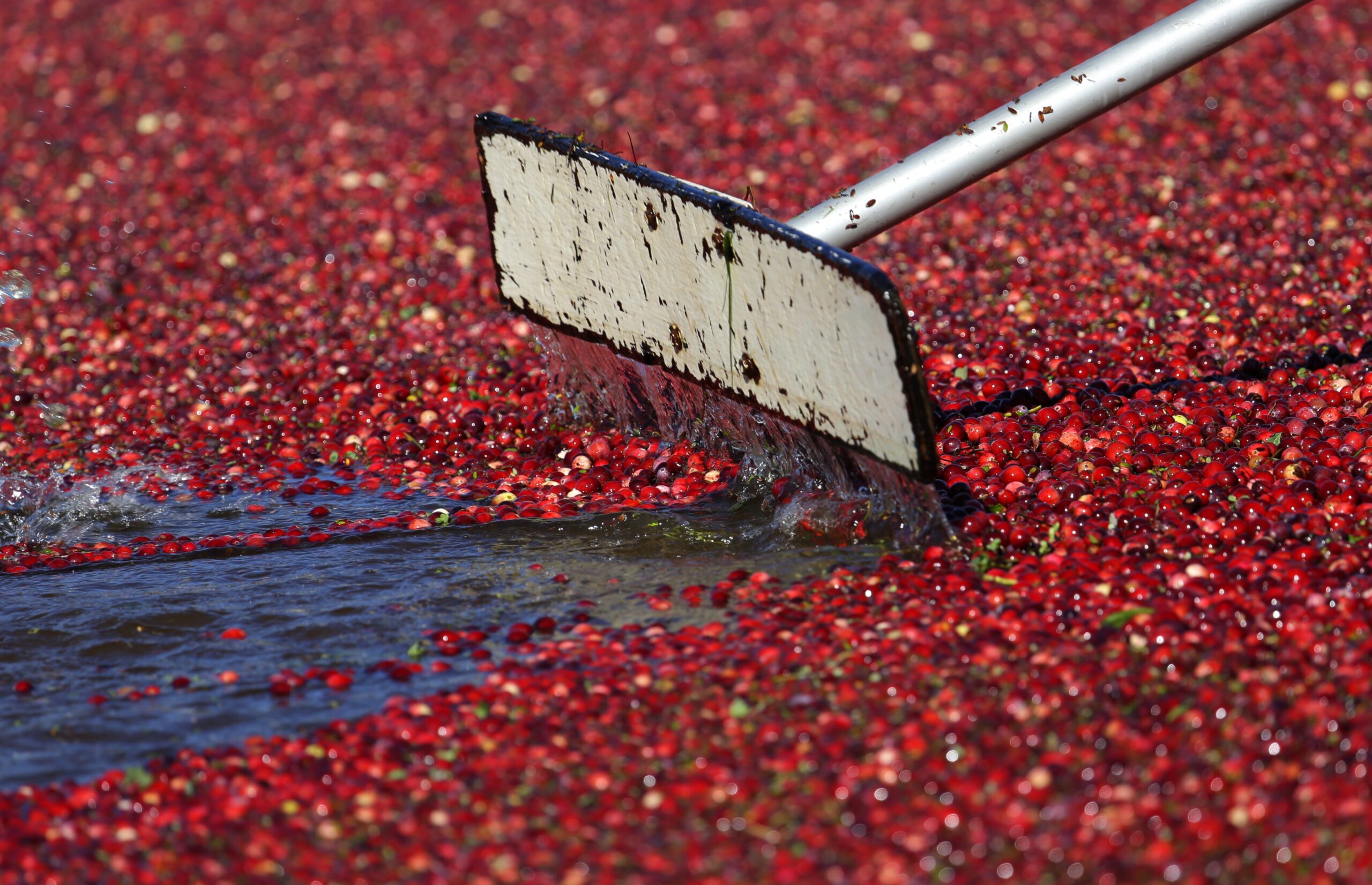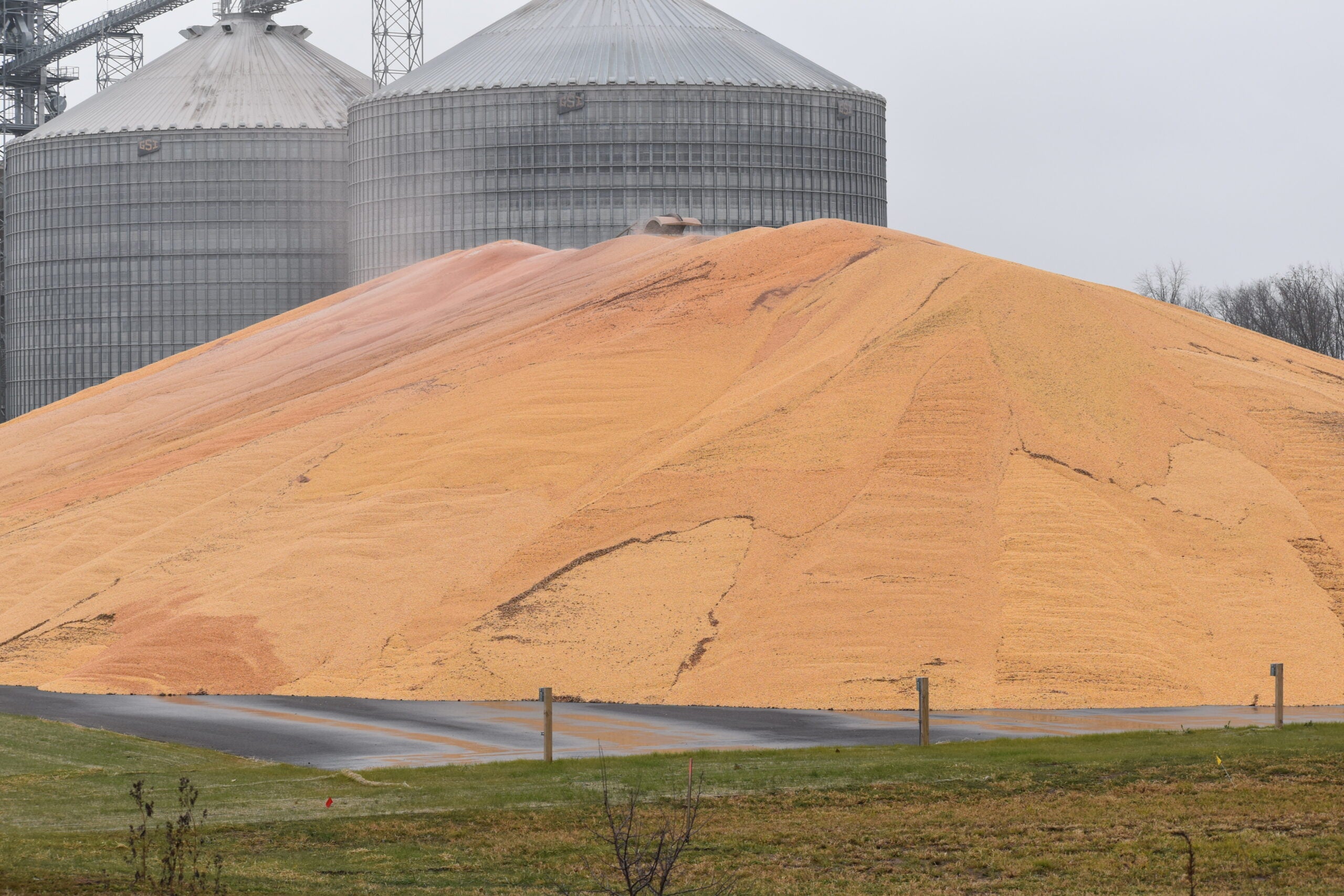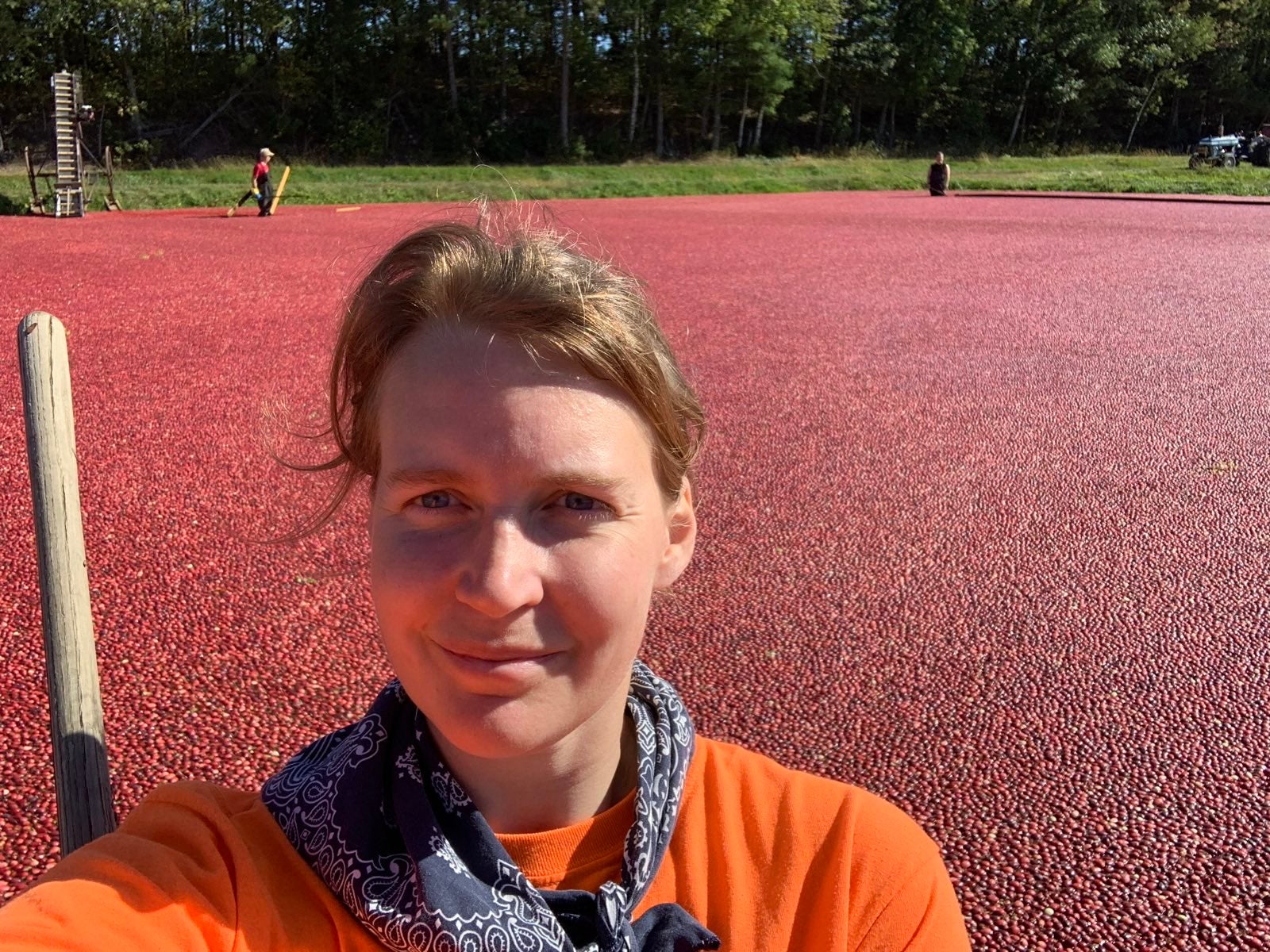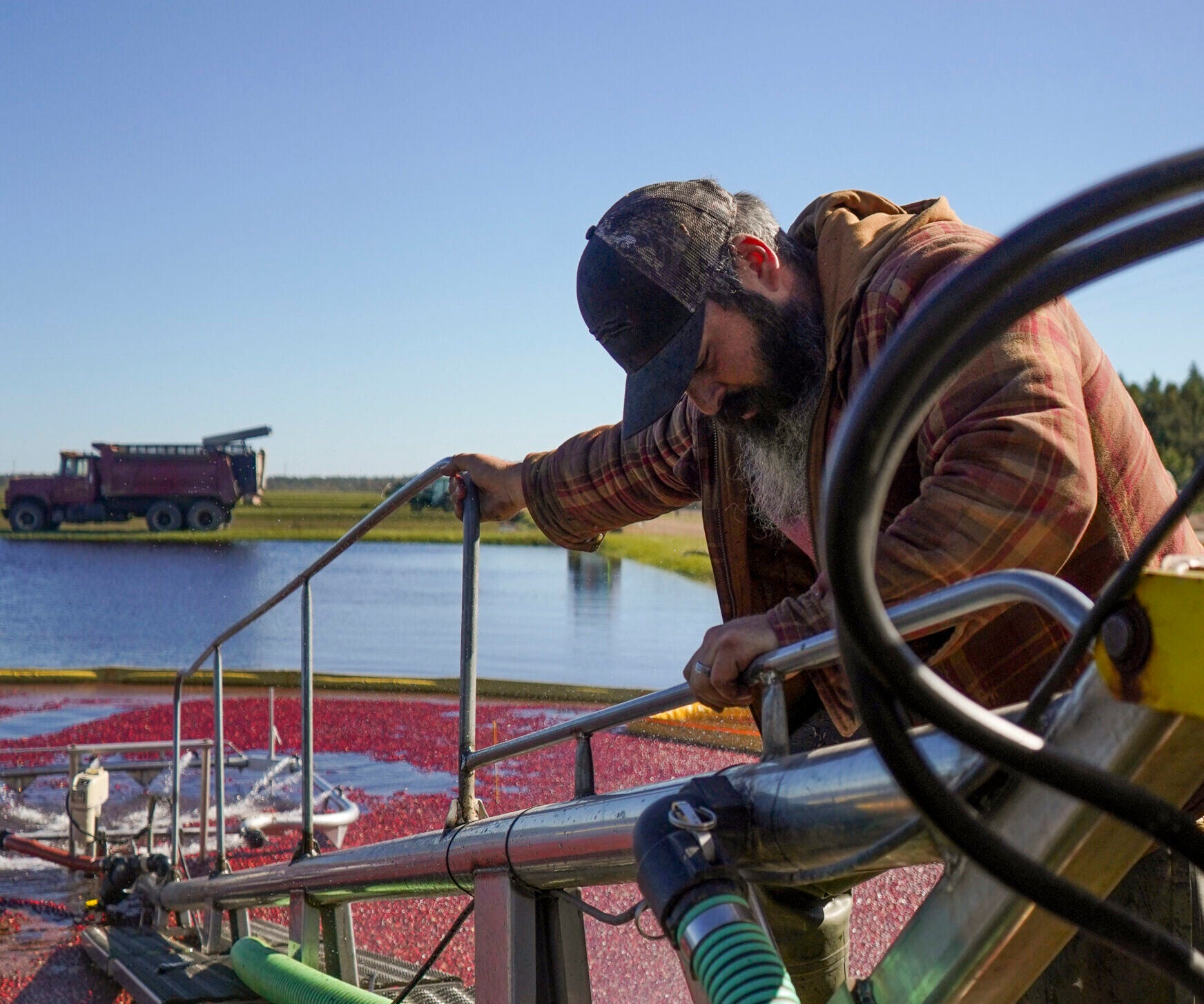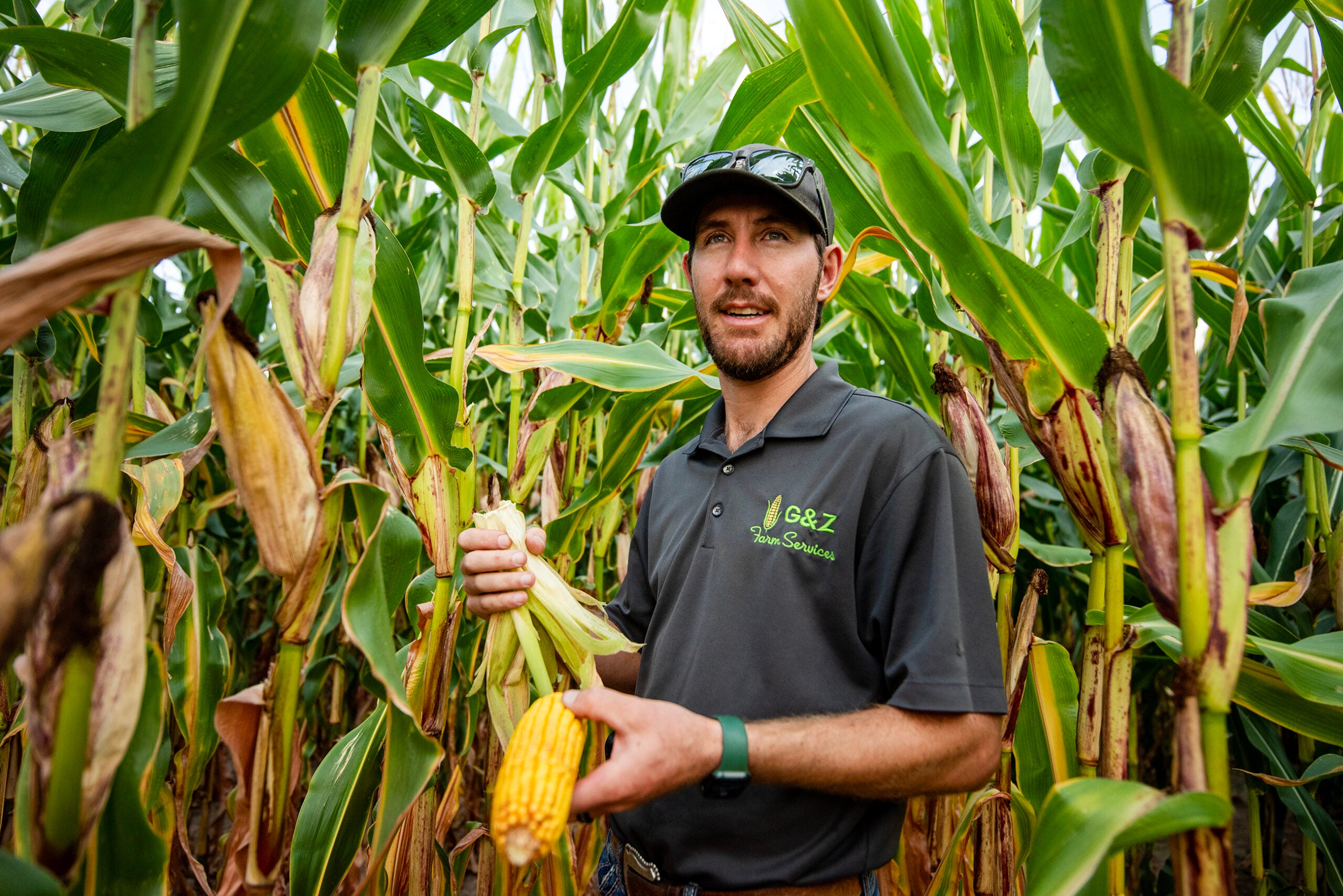Dave Hansen, manager of DuBay Cranberry Company in Junction City, Wisconsin says the weather this summer has been warmer and drier at times than he would have liked.
But now that he’s about a month out from harvest, Hansen says this year’s cranberry crop has ended up in great shape.
“It looks like it’s going to be an average or little above-average crop for us here at DuBay,” Hansen said. “It’s finally cooling off and right now, it’s got the hint of fall coming. So it’s just right around the corner.”
News with a little more humanity
WPR’s “Wisconsin Today” newsletter keeps you connected to the state you love without feeling overwhelmed. No paywall. No agenda. No corporate filter.
The U.S. Cranberry Marketing Committee forecast in August that Wisconsin growers will produce 4.92 million barrels this year. That’s about 60 percent of the estimated U.S. crop.
Tom Lochner, executive director for the Wisconsin Cranberry Growers Association, said this year’s estimated crop is closer to the state’s average crop of 5.5 million barrels.
“We still have a few weeks to go before we start harvesting and the continued warm weather might help the fruit size up a little bit,” Lochner said.
He said this year’s crop will still be larger than what growers have brought in during the last two years. Wisconsin’s 2020 crop totaled 4.64 million barrels, just under the 2019 total of 4.67 million.
But Lochner said having less fruit has not been a bad thing for the industry, which has struggled with an oversupply of cranberries in recent years.
In 2017 and 2018, cranberry growers asked the U.S. Department of Agriculture to manage production of the fruit to help reduce the large amount of product sitting in storage.
Lochner estimates the industry’s inventories are now 6 million barrels less than they were in 2016 and are finally getting back to more normal levels.
He said the COVID-19 pandemic has helped to boost domestic sales of the fruit, with more people consuming cranberry juice and dried fruit at home.
“International sales tapered off a little bit during the pandemic. I think that’s more so because of the tariffs that we’ve seen rather than the pandemic itself,” Lochner said.
He said President Joe Biden’s administration has so far upheld tariffs on steel and aluminum products coming from the European Union put in place by the previous administration. That means the EU has maintained their 25 percent tariff on U.S. cranberry products.
Lochner said the pandemic did disrupt plans to increase export of cranberries to China, which also placed a retaliatory tariff on cranberries under the Trump administration. So he’s working to make connections in new countries like India, where American cranberries can better compete.
Another industry challenge that’s gotten worse during the pandemic has been finding enough workers to fill year-round and seasonal jobs around harvest.
Lochner said some cranberry growers have even been working to bring in migrant workers from southern states to help this fall.
“(The labor shortage) affects not only the growers themselves, in terms of having people available for harvest, but it goes all the way through the supply chain,” Lochner said. “Making sure we have people to drive trucks, we have people that are working in the plants to receive the fruit and clean it and process it.”
Hansen said DuBay has been investing in more automated technology over the last few years to help reduce their annual labor needs.
“There’s a certain amount of labor we need no matter what. It might just prolong a little bit of the harvest because it takes a little bit longer to accomplish what we need to get done,” Hansen said.
He’s confident growers like him will continue to evolve to meet the realities of a limited rural labor force.
Wisconsin Public Radio, © Copyright 2025, Board of Regents of the University of Wisconsin System and Wisconsin Educational Communications Board.

